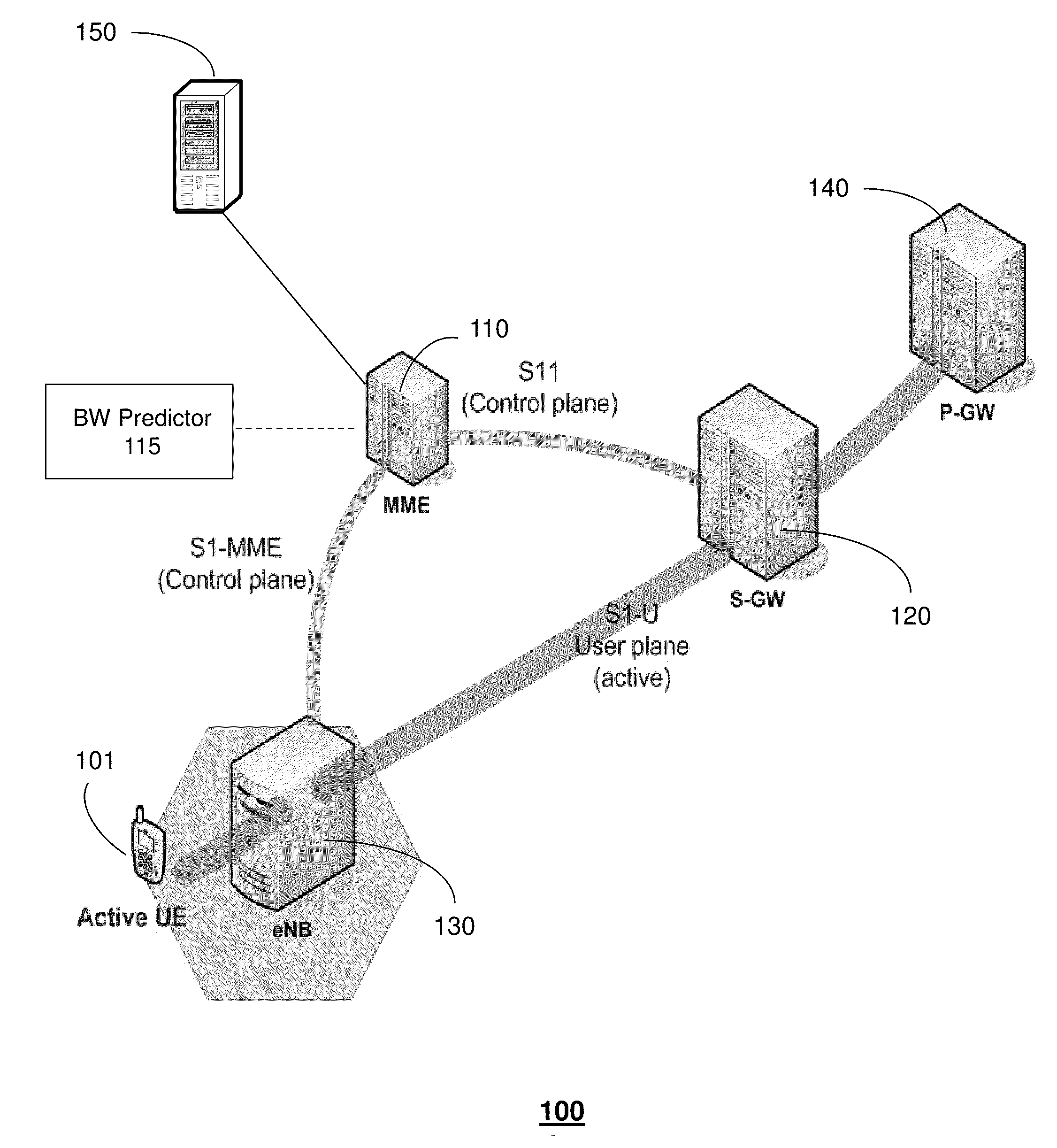Method and system for managing service quality according to network status predictions
a network status and service quality technology, applied in the field of network status prediction management system, can solve problems such as early abandonment of video playback, historical estimates that are potentially inaccurate, and frequent rate switches that are distracting and undesirabl
- Summary
- Abstract
- Description
- Claims
- Application Information
AI Technical Summary
Benefits of technology
Problems solved by technology
Method used
Image
Examples
Embodiment Construction
[0023]The subject disclosure describes, among other things, illustrative embodiments for dynamically adjusting bit rates during streaming of content, where the adjustments are based on predicted available bandwidth for the end user device. Other embodiments are described in the subject disclosure.
[0024]One or more aspects of the subject disclosure include systems and methods that provide for utilizing information used by video adaptation processes along with available network bandwidth to manage streaming of content to end user devices. The content can be video content, such as movies, video conferences, and so forth. The management of the streaming process can include dynamically adjusting bit rates during the streaming. In one embodiment, the adaptation process performed by a video client can determine a video quality for each chunk of content. For example, the adaptation process can obtain more accurate estimations of available bandwidth for an end user device by relying upon a p...
PUM
 Login to View More
Login to View More Abstract
Description
Claims
Application Information
 Login to View More
Login to View More - R&D
- Intellectual Property
- Life Sciences
- Materials
- Tech Scout
- Unparalleled Data Quality
- Higher Quality Content
- 60% Fewer Hallucinations
Browse by: Latest US Patents, China's latest patents, Technical Efficacy Thesaurus, Application Domain, Technology Topic, Popular Technical Reports.
© 2025 PatSnap. All rights reserved.Legal|Privacy policy|Modern Slavery Act Transparency Statement|Sitemap|About US| Contact US: help@patsnap.com



